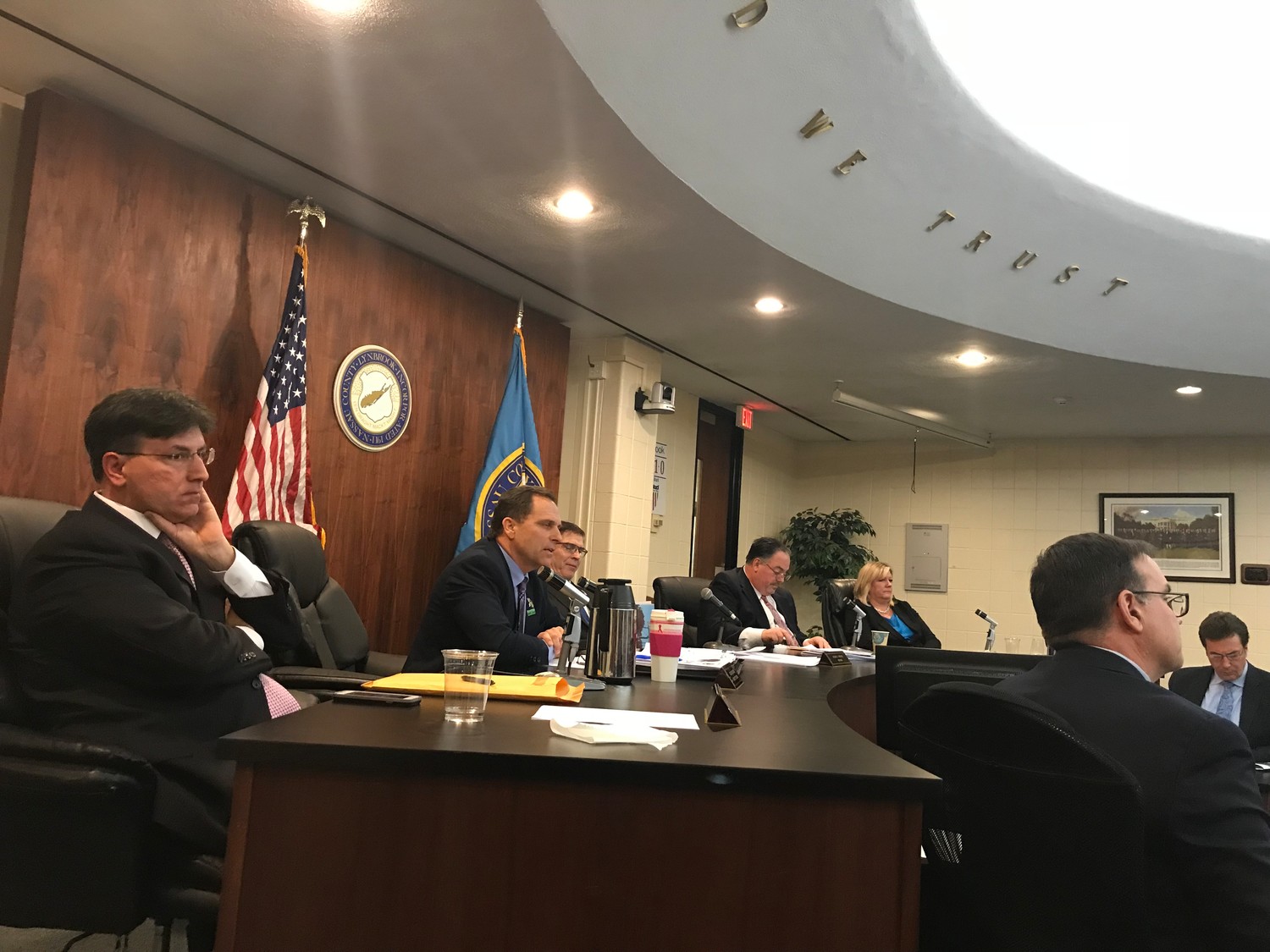Lynbrook village board seeks better ways to inform residents about projects
After last fall’s decision by the village board of trustees to nix the Cornerstone at Lynbrook project, Lynbrook officials expressed varying views at the board’s Jan. 14 meeting about the efforts they should make to better inform residents about future project proposals.
With a number of residents saying they were never notified about the $75 million apartment proposal, which also included a $10 million parking garage, Village Attorney Tom Atkinson said there was no previous mandate to alert residents about development proposals. To remedy this, Mayor Alan Beach and board members opened a public hearing to sample residents’ opinions before deciding how to act.
After some debate, Trustees Mike Hawxhurst, Ann Marie Reardon and Robert Boccio voted to approve Beach’s recommendation to amend the village code, which now requires that village officials notify all residents within a 200-foot radius of any proposed project that measures at least 2,000 square feet, including homes, extensions, businesses, apartment complexes and parking garages.
“The reason that we’re doing the 200-foot radius to begin with is because there is nothing on this in the code,” Beach said. “. . . It’s just common courtesy, and that’s what this is about — notifying the surrounding residents.”
Deputy Mayor Hilary Becker, who is running against Beach in the March 19 village election, was the lone board member to vote against the measure, noting that he believed the entire village should be notified if a parking garage or apartment complex were proposed.
Becker had vocally opposed the Cornerstone project, which the board voted down in November. Despite his belief that residents should be notified about projects, he said, he voted against amending the code because it did not go far enough in notifying people.
Many residents who attended the Jan. 14 meeting said they had no idea that the Cornerstone had been proposed until they heard about it from other residents, which sparked a debate about how village officials could better notify community members about project proposals.
Cathy Bien said that information about projects like the Cornerstone was and is available. “People who want to know about changes, they know where to look,” she said. “When people say they weren’t notified, I just don’t know why they didn’t bother to look. That’s the problem. They didn’t look.”
Board members noted that they found out about the project in local newspapers, and several updates were provided on the village’s website. Many residents pushed the board to surpass the 200-foot notification limit for major projects, while Becker lobbied to find other ways to reach residents in the digital age.
Harry Levitt, who owns Mur-Lee’s Men’s and Boys’ Wear on Atlantic Avenue, said that sending notices to everyone in the village could hinder development. “You guys are elected to represent the village and your departments,” Levitt said. “You guys are elected to make these decisions for what’s best for the village. . . . To send out a mailer to the entire village, then what does the village need a village board for? Because nothing will ever get done, and I think it will send the wrong message.”
Village Clerk John Giordano said it cost $1,000 for officials to mail a postcard-sized notification about the Cornerstone to residents, which was sent via the U.S. Postal Service to the entire village. After the flier was mailed, however, many residents said they had not received it.
Becker recommended that the board hire experts to study how best to disseminate information, but many residents called the suggestion a waste of taxpayer dollars. Beach recently assembled a 12-person committee that will meet monthly to discuss how to distribute information better.
If there is a large project, Boccio said, perhaps the village should consider expanding the notification radius, but he noted that the board would have to agree on the minimum scope of a project to do so. Hawxhurst said he worried that if the requirement were amended, if only one person among 8,000 homes said that he or she had not received the flier, it might become impossible to complete a project.
Beach said that the board might revisit the code in the future, but he wanted to ensure that a requirement was in writing going forward.
Boccio echoed those sentiments. “This law,” he said, “seeks to remedy what has been brought to our attention: the failure of the village in a prior law to notify anyone with respect to these types of projects done in the downtown area.”

 49.0°,
Fair
49.0°,
Fair 




